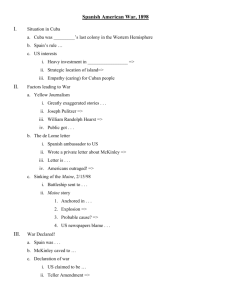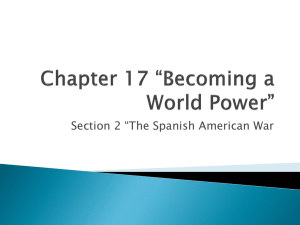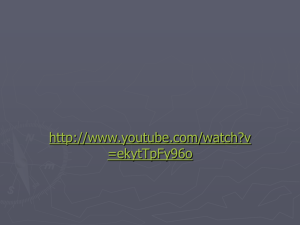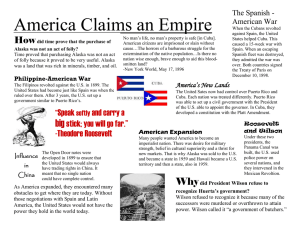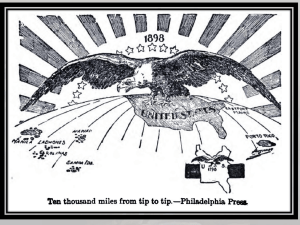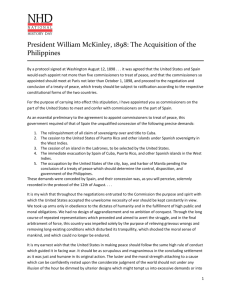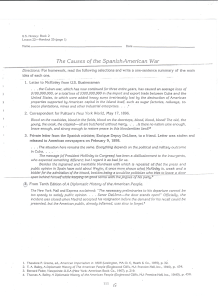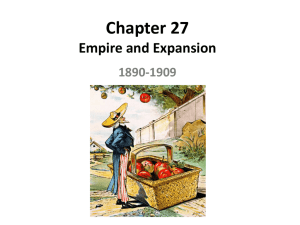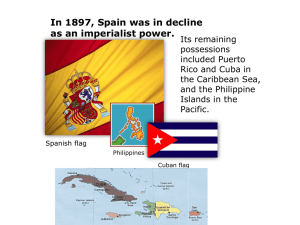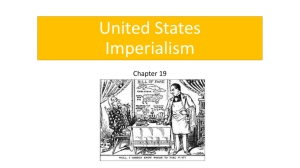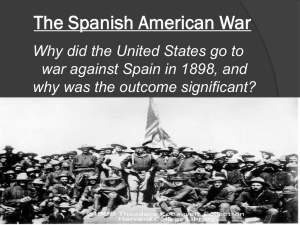Ch 10 Section 2 PPT
advertisement
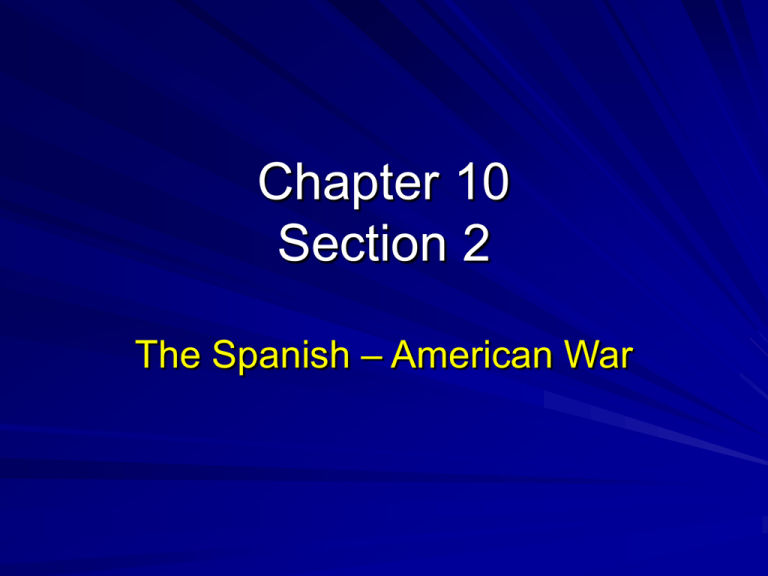
Chapter 10 Section 2 The Spanish – American War The Press and It's Effect on US Involvement in the Conflict Between Spain & Cuba The press exaggerated the Cuban conflict further increasing American support for the Cubans In their competition for readers, Joseph Pulitzer of the New York World and William Randolph Hearst printed sensational, often exaggerated, stories in order to sell newspapers in what became known as yellow journalism 260 American sailors were killed when an explosion on the US battleship Maine caused the sinking of the ship in Havana Harbor Cause of the explosion was unclear, but many Americans blamed Spain Congress approves $50 million that president McKinley requests to prepare for war Spain offers to negotiate but would not consider Cuban independence Congress then passes a resolution declaring the island independent and gave Spain three days to leave the island Attached to the resolution was the Teller Amendment which stated that the US had no interest in taking control of Cuba The resolution caused Spain to declare war on the US on April 24, 1898 The next day Congress and President McKinley declared war on Spain War With Spain The US had a more powerful navy Commodore George Dewey led the American Asiatic squadron at Hong Kong in an effort to overtake the Philippines Dewey’s ships boldly sailed into Manila Bay, Philippines and destroyed Spain’s Pacific fleet (381 Spanish died, 0 Americans) When the war began, US military had about 28,000 soldiers… By the end of the war, the US had 280,000 Of the few thousand members of the US forces who died during the war, only a small percentage died in battle… The majority died of yellow fever and other deadly diseases The most colorful group of soldiers in the war was the First Volunteer Cavalry, the Rough Riders organized by Theodore Roosevelt (a future president) The US had a bigger army than the Spanish Spain asks for peace and signs a cease-fire on August 12, 1898 The Question of Cuba The peace treaty placed Cuba, Puerto Rico, the Philippines under US control Some Americans opposed the treaty and formed the Anti-Imperialist League who accused the US of building a colonial empire President McKinley set up a military government in Cuba to create stability in the area (and allow the US greater control) McKinley appointed General Leonard Wood governor and he began quickly building schools and a sanitation system Dr. Walter Reed was sent to Cuba as the head of the Army Yellow Fever Commission The Platt Amendment allowed the US to intervene in Cuban affairs and limited Cuba’s rights to make treaties New US Lands Spain surrendered the Philippines to the US in exchange for $20 million @ Filipinos had hoped for independence When the US decided to keep the Philippines, angry Filipinos started a guerilla war against the US that would last 3 years in 1902 (Full independence doesn’t come until 1946) Likewise, Puerto Rico had hoped for independence Puerto Rico became a commonwealth (a territory of the US) The Jones Act gave US citizenship to Puerto Ricans and opened both houses of Puerto Rico’s legislature to free elections in 1917 @
